The most common gooseberry sick: diseases, their causes and treatment
Even the most well-groomed gooseberries sometimes get sick. The reasons may be different: high humidity or temperature, infection in a neighboring area, etc. Of course, in any case, you need to quickly take measures to reduce the damage to the plant. And for proper treatment, it is necessary to make an appropriate diagnosis.
Why do berries turn white and rot?
Perhaps this is the most common attack, which is quite capable of destroying not only the entire crop, but also the entire plant. Examining the bushes, the summer resident notices a thin white coating on the berries, and sometimes on the leaves. If measures are not taken immediately, then the berries on the bush begin to rot. Gradually, a white, loose, as if mealy, plaque spreads. Following the berries, shoots begin to dry, because of which the plant weakens and may well die.
The reason for this is powdery mildew, a fungal disease.
The disease is especially problematic when high humidity is combined with a small number of hot, sunny days - ideal conditions for mold growth. Fighting the fungus must be comprehensive to ensure maximum effectiveness:
- All affected berries, leaves and even shoots are carefully (so as not to shake off the spores) removed and burned.
- The plant is sprayed with appropriate preparations. If the disease is not recorded during flowering and before the period of fruit formation, then you can use "Topaz".
- In other cases, folk remedies are preferred, less effective, but safer. A manganese solution will do. 1.5 g of powder is diluted in 10 liters of water. You need to process the leaves every week and after every rain.
- In autumn, all the leaves from under the gooseberry are collected and burned.
- In the spring, when the buds are swollen, the plantings are treated with a Topaz solution to eliminate the possibility of powdery mildew in the new season.
How to quickly wash off black bloom from berries?
Sometimes a summer resident, having arrived at his site and examined the property, notices that a brown or even black bloom has appeared on the gooseberry fruits. It is rather difficult to say unequivocally what kind of disease it is - you need to conduct special research. However, one thing is clear - there is a fungal disease.
Powdery mildew
One of the probable diseases is a subspecies of powdery mildew, American. At first, a white coating appears, but then it darkens, forms brown and even black spots.
The fight must be carried out with a set of measures, the first of which is treatment with a fungicide, for example, Topaz, Bordeaux liquid or copper sulfate solution.
Root rot
If the stems turn black, it is probably root rot, and in an advanced stage. Pull the bush not very strongly - if the stems move away from the roots, cut off the surviving shoots, maybe new plantings will come out of them. But most likely, the plant will have to be completely burned, and the earth will be etched with a solution of copper sulfate.
Roots rot and turn black due to excess moisture:
- groundwater passes close,
- heavy rains
- excessive watering.
We fight reddening of the leaves
Leaves turn red for two reasons:
- Simple lack of boron and iron. It can be eliminated quite easily, you just need to dilute iron sulfate (2 g in 1 liter of water) and spray the plant. With this approach, trace elements will immediately fall into the leaves, and after a few days the alarming symptom will disappear.
- More alarming symptoms are redness around the edges, followed by drying and falling off, thin cobwebs (white bloom) and light spots on the back of the leaf. This indicates an attack by a spider mite. It sucks nutritious juices from the leaves, which makes them sick, reddening at the edges. Getting rid of this pest is more difficult.
How to remove spider mites
Despite its small size, the spider mite causes significant harm. In addition, it entangles the leaves with cobwebs, which is why moisture cannot evaporate normally, and the gooseberries additionally suffer, wither.
Popular methods help against the parasite - they are very effective and at the same time environmentally friendly. It is not necessary to wait for the right moment for processing, as when using purchased drugs. Folk remedies can be sprayed with bushes after flowering and even during fruit formation:
One of the techniques is to use wormwood:
- A broom of blooming bitter wormwood should be poured with warm water and left for a day.
- After that, remove the greens, and boil the solution for half an hour.
- Next - dilute with water in a 1: 1 ratio.
- Add a little soap for viscosity - ordinary household soap rubbed on fine fractions will do.
A good result in pest control can be achieved with a tobacco solution:
- For cooking, you need to take 10 liters of hot water and add 400 grams of tobacco to it.
- The liquid is infused for two days, after which soap is introduced into it - about 40 g.
The resulting infusions need to process gooseberry bushes - twice a week. Processing can be done both in summer and in spring and autumn.
What do orange spots mean
If small orange spots appear on the leaves, this is an alarming sign - the bush is sick with anthracnose. Over time, the spots become more and more - until they merge into a single brown mass. After that, the leaves dry up and fall off - only a few leaves remain on the upper parts of the bushes.
The disease affects the plant as a whole. Young shoots almost stop developing, the berries become tasteless, and in the most advanced cases, the branches dry out.
Control measures are quite standard, similar to gooseberry treatment for powdery mildew:
- Leaves - affected and fallen - are burned.
- Whole leaves are processed with herbal infusion or copper sulfate solution.
- Repeated preventive treatment is performed in May, before the first leaves appear. This usually resolves the problem effectively.
Gooseberries dry - what to do?
Already in June or early July, when the hottest days have not yet arrived, and the soil is moist enough, gooseberries begin to dry. First, the leaves, and then the shoots, become brittle, brittle. What is it?
In most cases, this is due to the fault of harmful fungi:
- The strains that cause tuberculariosis - settle in the cortex and destroy the internal communication of the pores, due to which the juice cannot pass through them normally,
- Leading to verticillium wilting - they clog the vessels, not allowing moisture to pass through them.
In both cases, the plant suffers from thirst and dries up. To save the gooseberry, you need to take action soon. Treatment is standard: destruction of diseased leaves and shoots, moisture control and two or three fungicide treatments.
Removes rusty growths on flowers
Sometimes, small bright orange pads appear on the leaves, ovaries and flowers. This disease is called goblet rust. It usually infects gooseberries if sedge, pine or cedar grows nearby.
The most effective way to combat is three times treatment with a solution of Bordeaux liquid:
- When the leaves are blooming.
- As soon as the buds appeared.
- When the color has crumbled and the pollination period is over.
In the most advanced cases, it is recommended to make a fourth spraying - a week after the third.
By remembering these simple tips, you can surely be able to effectively fight a variety of gooseberry diseases, protecting your garden from any misfortune.
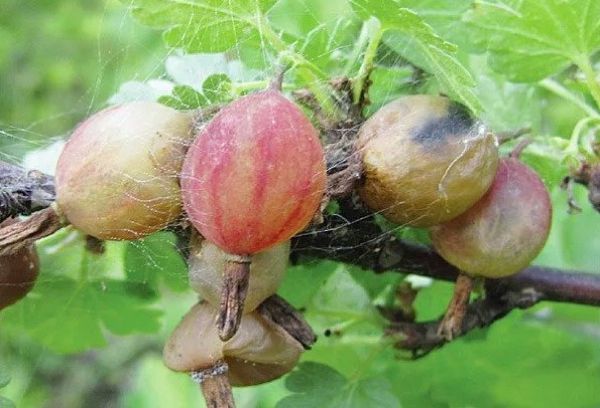
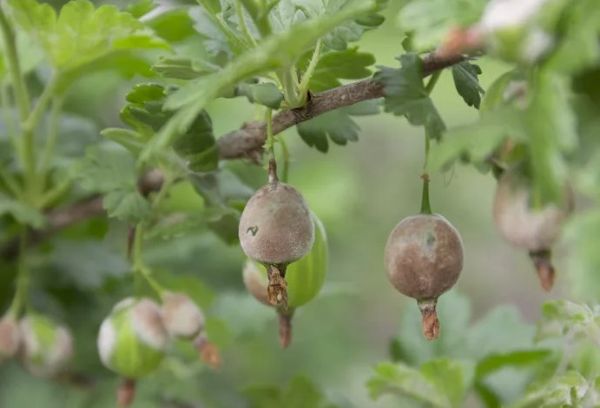
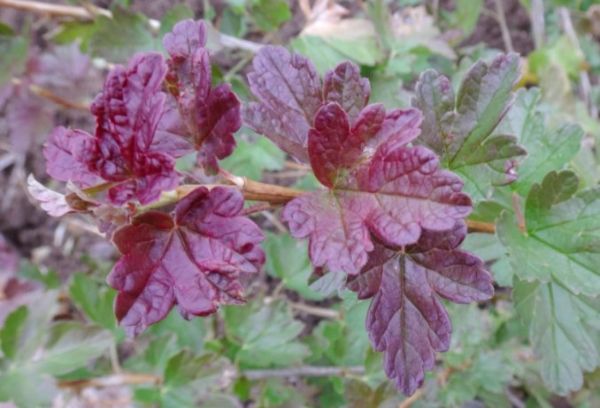


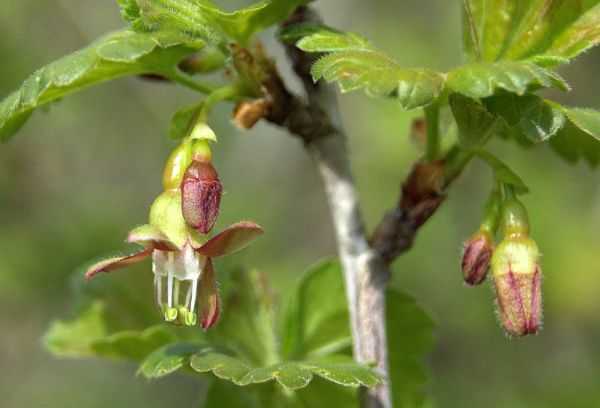

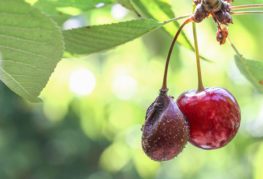
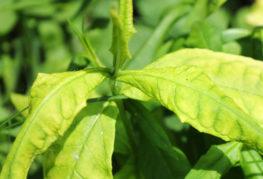
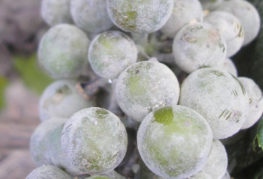
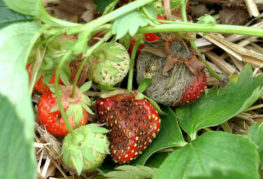
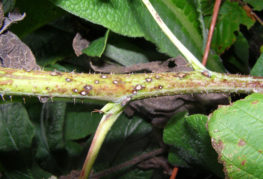
and will be published shortly.